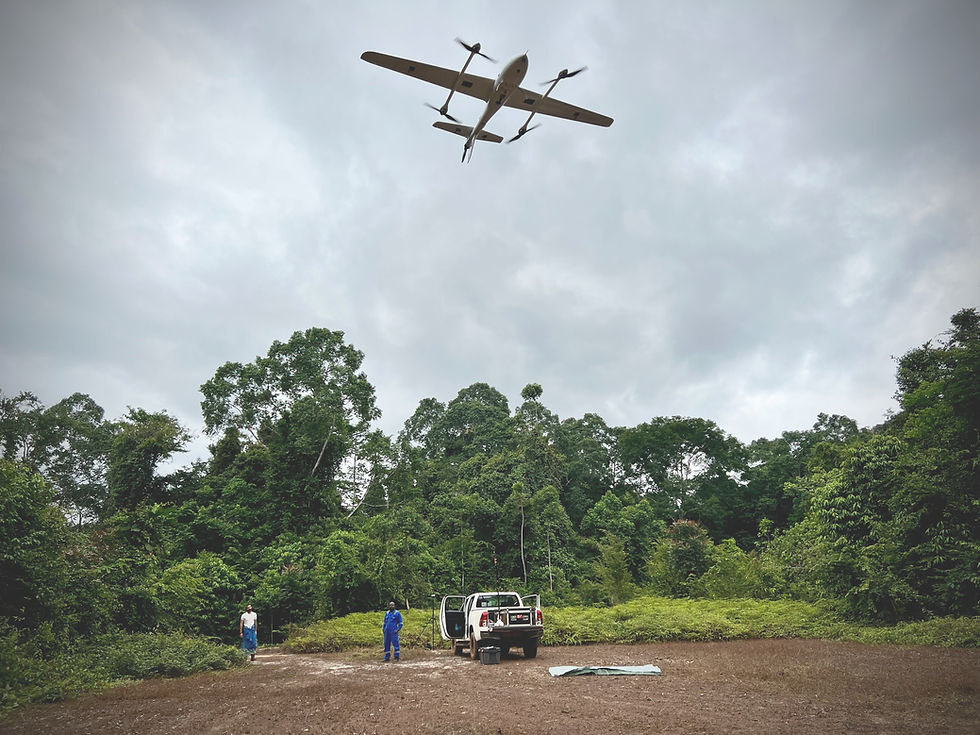Drone Mapping in Gorongosa National Park, Mozambique
- Luke Wijnberg
- Oct 20, 2016
- 4 min read
Gorongosa National Park is a 4000 square kilometer nature reserve in central Mozambique. In the 1950s it boasted some of the greatest animal densities in Africa, with over 500 bird species, abundant carnivore populations, as well as reptiles. The park originally began as a hunting reserve in the 1920's and became a popular destination very quickly. A camp was built in 1940 for administration and tourists but had to be abandoned in 1942 due to flooding. This remaining structure from that era has now become a famous landmark in the park, known as "Lion House", due to a pride that has taken up residence among the ruins.
Disaster struck the park between 1981 and 1994 with the famous civil war in Mozambique. In December 1981 the Mozambican National Resistance (MNR, or RENAMO) fighters attacked the Chitengo campsite and kidnapped several staff, including two foreign scientists. The violence increased in and around Gorongosa. In 1983 the park was shut down and abandoned. For the next nine years Gorongosa was the scene of frequent battles between opposing forces. Fierce hand-to-hand fighting and aerial bombing destroyed buildings and roads. The park's large mammals suffered huge losses. Both sides in the conflict slaughtered hundreds of elephants for their ivory, selling it to buy arms and supplies. Hungry soldiers shot many more thousands of zebras, wildebeest, buffalos, and other ungulates. Lions and other large predators were gunned down for sport or died of starvation when their prey disappeared.
A cease-fire agreement ended the civil war in 1992 but widespread hunting in the park continued for at least two more years. By that time many large mammal populations—including elephants, hippos, buffalos, zebras, and lions had been reduced by 95 percent. Surveys counted just 15 buffalo, 5 zebra, 6 lions, 100 hippos, 300 elephants and just a handful of wildebeest.
In 2000, Mozambique experienced the worst floods in 50 years. over 700 people were reported killed and thousands of square kilometers of land was affected. The flooding resulted from 5 weeks of intense rainfall, causing rivers to burst their banks and overflow.
Despite all the challenges the park has endured, there is now a renewed push to restore the park to its former glory. With funding from foreign investors as well as the Mozambican government, the Gorongosa is quickly becoming a popular tourist destination again. So much so that the old camp of Chitengo has outgrown itself, and new luxury, remote camps are now in demand. Many companies are eager to be a part of this big business but are wary of the environmental risks previously experienced.
One of those intrepid business is The Gorongosa Collection, which aims to establish luxury tented camps in strategic points within the park. However, the developers insisted that the area be higher than the flood levels recorded in the 2000 floods. Since the ruins of "Lion House" still exist, the high water mark is still very much visible on the structure walls on this very flat plain. This mark to be transferred to the proposed new camp site, 3.5km away to ensure that the structures remain high and dry.
3DroneMapping was called in to map those proposed areas and compare the levels from the floods in 2000 with the planned new locations. Since this section of Gorongosa is so flat, it is next to impossible to accurately measure levels without the aid of instruments. Using post processed GPS data with accurate satellite ephemeris data, the high water mark was determined and then compared to various other sites in the vicinity as well as being used for accurate control points for photogrammetry.
Our inhouse fixed wing mapping RPAS was deployed at suitable elevations to mapped the various areas after control points where placed and measured with the accurate GPS system. From the images, orthophotos and point clouds where produced. The points clouds contain nearly 1 billion points of the terrain surface that contain colour, horizontal and vertical measurements. These points where then both manually and automatically classified into various levels of vegetation, structures and bare ground. From the bare ground points, an accurate 3d model of the terrain can be made from which contours linking areas of equal elevation can be produced. Without classification of pointcloud data, the terrain data would be incorrectly include the vegetation, giving false representations of the topography.
Chitengo airstrip was also surveyed by 3DroneMapping. This was done to ensure that the airstrip is indeed above the high water as well as a overview of the slope of the strip as it undergoes a surface upgrade. From our 0.25m vertical intervals, engineers could ascertain the slope and where the cut and fill is required to ensure good water drainage as well as an even camber.
Using RPAS for this project not only ensured that the client receives the data in the most cost effective fashion, but also allowed for flexibility in the field to allow for last minute changes to flight paths to accommodate the scope requirements. Other deliverables such as 3d renders for visualizations and marketing purposes were also generated.

































Comments